--
Acorn Lodge
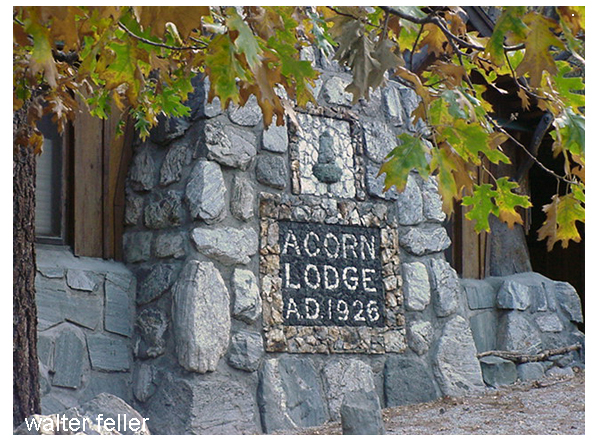
On the surface Wrightwood's Acorn Lodge is merely a piece of real estate which has recently been purchased from the Church of the Open Door by a group of individuals and broken into smaller land parcels. Yet, look into Acorn Lodge's rustic structure and its intriguing rock work and you'll begin to discover something of the man who created Acorn Lodge and who earned a position in Southern California's history.

The man was William Marion Bristol, born in Belvidere, Illinois on January 20, 1859. Bristol was an inventive, imaginative, energetic, whimsical man who was something of a practical joker. When he came to California he spent some five years in Los Angeles attempting to make his fortune in real estate, yet lost it in 1887. He then left with his two burros to seek his fortune in the California country side.

A special art gallery was constructed at Acorn Lodge to display Bristol's collection. Some of these included paintings by J.C. Davis, one of which was the "Overland Trail", now on display at the Wrightwood Museum.
In February of 1893, at the age of 34, Bristol married Fannie Howe Dearborn, who was 27 years old. Together they had four children, which included one who died in infancy and one who died as a teenager.
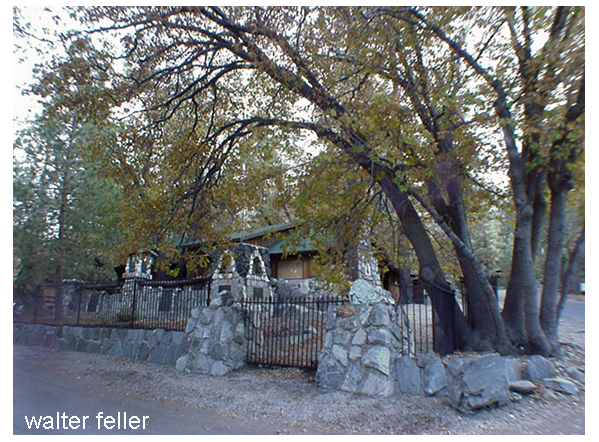
Bristol was not the type of man to settle down and live a predictable life, his adventures seemed to continually lead him down varying paths. For instance, when he decided to christen the peak above his ranch, Mount Harrison, in honor of the President, he led some 27 men and women up to the mountain, and planted a 40 foot pole atop it, with an 18 foot flag firmly attached. He was also active in various civic activities, including being the leader in the campaign which moved the site of the county courthouse. In 1919, on a two month vacation, Bristol pitched a tent by a willow grove in Cajon Pass. He then set out to beautify the area and transform the site into an assessable public park, thus Camp Cajon, the first outdoor camp in the southland, was built. Bristol added the rock work to the buildings and built dozens of concrete tables. The two month project lengthened by several years. Nineteen years after Bristol first began working on Camp Cajon, the site was destroyed in the devastating flood of 1938. Yet, many of the massive tables, some of which bore dedication plaques in their center, have found their way to other Southern California parks.
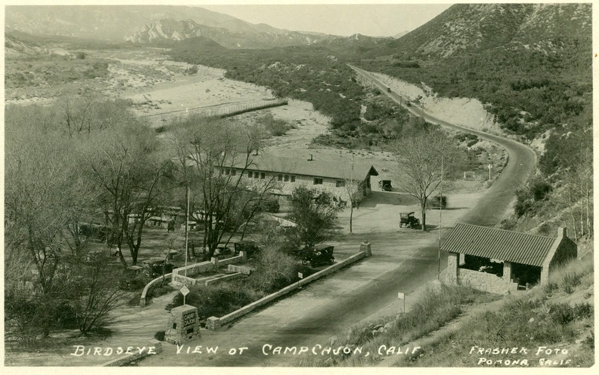
Another pet project of Bristol's was Acorn Lodge, which he began building around 1926 and completed approximately three years later. The rustic Wrightwood lodge was filled with intriguing accessories, each the handiwork of the imaginative Bristol. He began with the stone frontispiece, which proclaimed "Acorn Lodge A.D. 1926", then added interesting pieces from nature, such as the curved log which formed an archway, the turnstile created from twisted logs, or the bells cut from stone, to name just a few. Visitors came to the lodge, and for a time Bristol even charged 25 cents for a tour of what he called his Acorn Lodge museum. Bristol, who was fond of chronicling his life via scrap books, decided to create a souvenir book of his beloved Acorn Lodge. And so "The House that B - Built" was published.
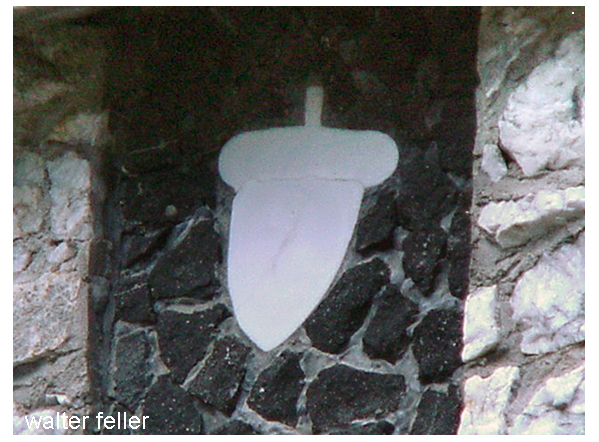
The 147 page book, printed in 1929 by Bristol's son-in-law, William P. Doherty, contained over 50 photographs and captions, and over a dozen short stories and poems of local interest. Today, the book is out of print, and while a few books are owned by some Wrightwoodians, individuals who would like to view a copy of the book can do so by visiting the California Room at the San Bernardino Library.
Bristol's grandson, Mal Doherty, a six year part time resident of Wrightwood, has recently given Mountain/Hi-Desert Guide his permission to reprint "The House that B - Built" within the monthly publication. For the next six or seven months, readers will be able to collect a tabloid size four page insert. After collecting the six or seven inserts, the reader will then be able to fit the inserts together and then have their own copy of "The House that B - Built"... complete with interesting articles and photographs of local history.
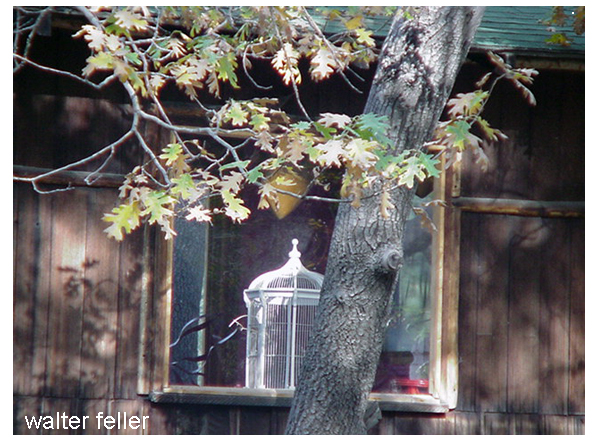
When you begin to collect the book, there are a few things to look for... first, the book is reportedly written by William B. Marion ( a pen name for Bristol), the author intentionally avoids mentioning the name Bristol within the book, instead refers to himself as "B-".
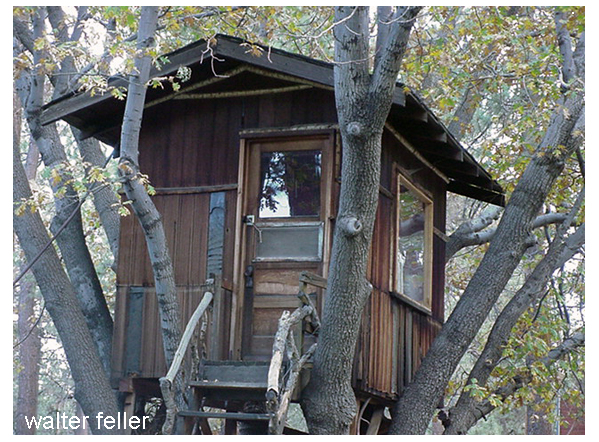
Although Bristol had no formal education, he wrote frequently and had many articles published in local newspapers and in Westway's magazine, some of which are included in the back of his book. But reader beware ... the articles dated April 1 are pure fiction. Occasionally Bristol would have articles printed in unsuspecting newspapers on April Fool's Day, then the articles would later be retracted.
As a good friend of the newspaper tycoon, Harry Chandler, Bristol once had an ongoing corresponding relationship with newspaper columnist, Alma Witaker. Yet, unsuspecting Alma thought the letters were coming from three separate individuals, none of whom were named Bristol.
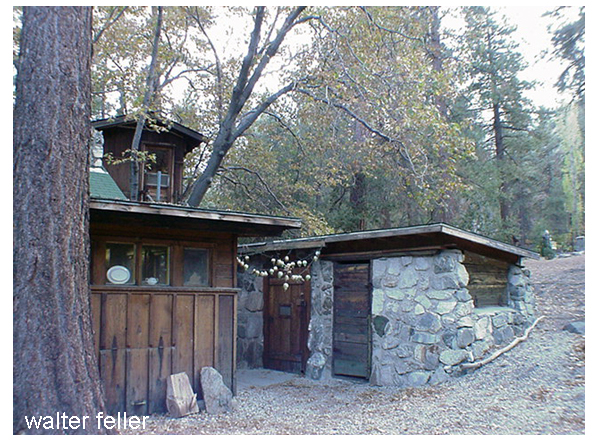
In 1939 Chandler and a group of friends brought Alma to Acorn Lodge for an elaborate hoax. Alma met Bristol for the first time, then the old prankster excused himself, saying he needed to go to the village to take a phone call. Bristol then returned, dressed as a woman, and assuming the name of one of the imaginary individuals, who had been writing Alma.
Although the columnist immediately recognized Bristol, she played along with the game, watching her host dress to the other two characters he'd created. After they had a good laugh, they became fast friends, and the two continued to write one another.
In the course of his lifetime he visited and photographed a variety of individuals and locations which played early rolls in Wrightwood's history. On film he captured Wright's Ranch and the now vanished Wright's Lake. He even knew and wrote about the legendary Mountain Man, Vincent. Knowing the recluse Vincent never posed for photographs, the reason, of course, was that he once killed a man, Bristol and his son visited Vincent, telling him that they wanted to photograph Vincent's rifle. As Vincent watched Bristol fumble with a tripod, Bristol's son nervously captured the unsuspecting mountain man on film.
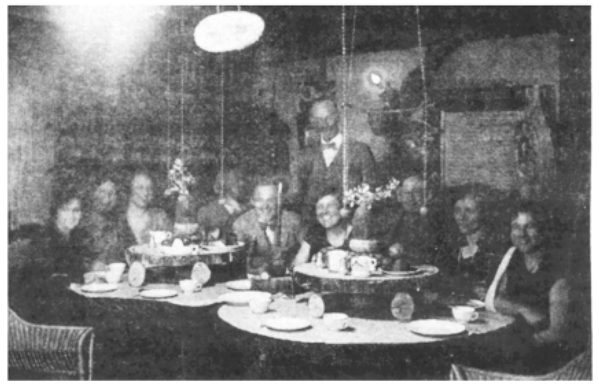
In 1941, after a full and rich life, William Bristol died at the age of 82 by his own hand. His somewhat sensationalized death was reported in local newspapers, which bore headlines such as: "W.M. Bristol Lies in Home Made Casket, Shoots Himself", or "Bristol Noted Pioneer Kills Himself at 82", or "Bristol writes eloquent plea for euthanasia, Kills himself". Yet, the letter he left behind, and requested the newspapers to print, helped to explain why a man would even consider to take his life. The letter read:
"To my family and friends:
I was standing on a street corner in San Bernardino one day debating what I should do next, when a passing acquaintance hailed me with, 'Well, what are you scheming now?' 'I am planning to charter a vessel and load it with old people who want to sail for the Port of Oblivion.'
'It won't work,' said my friend. 'You can't get a big enough boat.'
Webster's Dictionary printed in 1912 defines euthanasia as; 'The act of practice of painlessly putting to death persons suffering from incurable and distressing diseases as an act of mercy,' and adds that legalizing of this has been advocated.
During my rather long life I have had occasion to put several domestic animals out of their misery; and can see no reason why the human animal should be denied the same release. I had hoped that the practice of euthanasia might become general before I myself should reach the end of the trail; but I have never come to the point where I can no longer endure the painful and incurable ailments that have overtaken me. If I were to enumerate them, I am sure no one would censure me for bringing them to an end, much as I dislike doing it myself.
I have left all necessary instructions for my burial in an unmarked grave in the forest above Acorn Lodge and in the rustic casket I made for myself several years ago.
In conclusion I plead for the speedy and nationwide legalizing of euthanasia. It would be vastly preferable to giving the old folks old age pensions, thereby virtually compelling them to drag out a long and miserable existence. Youth cannot intelligently sympathize with age."
Editor/Publisher of the Mountain/Hi-Desert Guide
Edited by George F. Tillitson
Originally Published in the
November - 1988 Issue of the Mountain/Hi-Desert Guide

William Marion Bristol